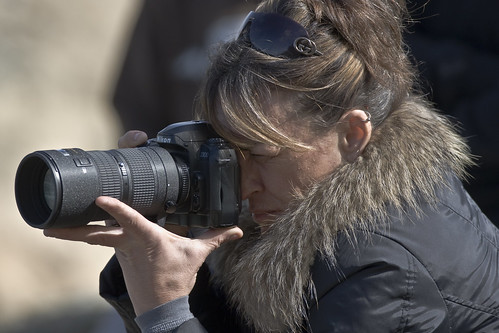Timing Your Tweets For Success
Monday, October 31, 2011

It is a simple game plan when it comes to Twitter. The more people your tweets reach, the more established you can become as a credible source of news.
The latest in news-industry issues, as written by multimedia journalism and integrated marketing communication students at Simpson College.

It is a simple game plan when it comes to Twitter. The more people your tweets reach, the more established you can become as a credible source of news.
An article by the NYDailyNew.com, covered a journalism workshop, helped to shed light on the struggling problem of diversity in newsrooms.
New York University's annual Urban Journalism Workshop is celebrating its 30th Anniversary this year. The workshop, offered to high school students around the country, is a week-long program that provides students with a crash course in newspaper reporting, writing and editing.
Program coordinator, Pamela Newkirk, spoke of diversity issues several times in the article, emphasizing the alarming decrease of minority journalists in recent years. The numbers in the aforementioned article placed the decrease at .82 percent; further showing that while African-Americans make up 15 percent of the population nationally, they only represent 4.68 percent of newsroom jobs in the United States.
While this article's main focused appeared to have been on the Anniversary of the workshop, I found the purpose of the workshop to be far more important. The numbers presented about the presence of diversity in journalism were alarming, and it would appear that if something is not done quickly, these numbers will continue to decrease.
Thus, it is great that the workshop is still running and able to celebrate a 30th year; however, the purpose of the workshop is far greater and it is important that their mission be carried out. If not, journalism, and all it stands for, is once again at risk of failing completely--as I have repeatedly stressed in my previous blogs.
 Here is a prime example of a journalist going for what he deems 'newsworthy'; however, does it come at a cost?
Here is a prime example of a journalist going for what he deems 'newsworthy'; however, does it come at a cost?
Jason Mattera, who wrote an ambush interview on Vice President Biden, is the new subject around Washington.
"I don't really care what the Washington establishment says," says Mattera who is the editor of Human Events. "If they want to give me affirmation or condemnation, it doesn't matter to me. My audience is not D.C. It's to get it ricocheted around the country."
I find those very encouraging words, that you don't have to focus on the one area you are living at to have your audience, but to branch out and aim for people all around the world.
Picture: creativecommons.org
Article: poynter.org

The look of televised news programs are similar from station to station. The basic news program consists of a lead anchor, or anchors, and a team of reporters who present prepared video and sound bites to the viewing audience.

Are security issues enough to prevent a picture from being taken? No, says the American Civil Liberties Union. In fact, they believe so strongly in the right to photography that they sued the Los Angeles County Sheriff's Department on Thursday, saying the law department has been harrassing both amateur and professional photographers who take pictures in public places.
The First Amendment Center published an Associated Press wire report on its website detailing the harrassment. According to the report, sheriff's deputies have harrassed many different photographers within two years, by stopping them, frisking, and in some cases threatening arrest. The photographers in each case had been taking pictures of public buildings, parks, and facilities. The problem with that, according the deputies, was that taking pictures of public spaces is a sign of a possible terrorist threat. One photographer was even asked if he was "in cahoots with Al Qaida" before being frisked.
Has it really gotten to the point that all photography of public spaces is suspicious? Then, wow, we have a lot of trouble. Teachers taking pictures of class trips to the zoo. College students taking pictures of their first trip to Washington D.C. Middle school students taking pictures in the gym at their public school dance. The difference between these scenarios and the cases being described is simple: the photographers are alone. They stand out.
Photography of high-risk public property is not itself a threat, and should not be treated as one. The ACLU has a list of photographer's rights on their website and advice on what to do if you are stopped or detained while taking photographs. Freedom of speech is not limited to simply the freedom of speaking or writing. It provides the freedom to see.
Photo/Mike Baird, creativecommons.org
 There is a grave concern for local news due to the fact that older methods of delivering the news are fading out because of the electronic tablets and smart phones that are readily available and easy to use.
There is a grave concern for local news due to the fact that older methods of delivering the news are fading out because of the electronic tablets and smart phones that are readily available and easy to use. A new PEW study suggests that newspapers are drawing tablet users to their products.
A new PEW study suggests that newspapers are drawing tablet users to their products.

Journalists must remain objective at all times. Without it, we would lose our credibility and trust from the public.

Let's face it: it's highly embarrassing to be caught spelling somebody's name wrong. Especially when you know or talk about someone often enough that you should have figured it out. For all of the media's focus on accuracy and fact-checking, though, they sure managed to screw up a very important name: Ghaddafi. Or, sorry, Qaddafi; Gadhafi; or was it Kaddafi?
Why can't anyone agree on how to spell the dead dictator's name? According to Poynter.org, in 1986 a syndicated columnist named Cecil Adams found at least nine different spellings for the name, the most exotic and confusing spelling jointly attributed to the Library of Congress and the Middle East Studies Association: Qadhdhafi.
To be fair, part of the problem is translating Arabic script into the English alphabet. Adams explained that there are several sounds in the name that don't have an exact English counterpart, and for a while, the Libyan leader wasn't concerned enough to straighten anything out. However, in May of 1986, the colonel made his feelings known when he responded to a letter from second graders at Maxfield Magnet School in Saint Paul, Minnesota. While he signed his name to his response in Arabic script, under it was typed "Moammar El-Gadhafi". News organizations announced they would make the switch as soon as the signature was made public.
Well, most of them didn't. This debate has gone to live on past his death, and it's a wonder that the media didn't simply check their facts from the start.
Photo/Bryan Mason at creativecommons.org
In the past week the death of Libyan dictator Muammar Gaddafi has made the headlines in the news and front pages of every news paper. Along with the stories some news outlets chose to show graphic images of Gaddafi after he had been killed. Now one of the major issues is whether or not the media should of displayed these pictures like they did.

Noun, pronoun, verb, adjective, adverb, preposition and profanity. Most parts of speech are protected; however, cursing is not protected by the First Amendment.

Social media is a prominent force today. One of every eight minutes is spent on Facebook and thousand of tweets are posted each hour.
© Blogger template On The Road by Ourblogtemplates.com 2009
Back to TOP